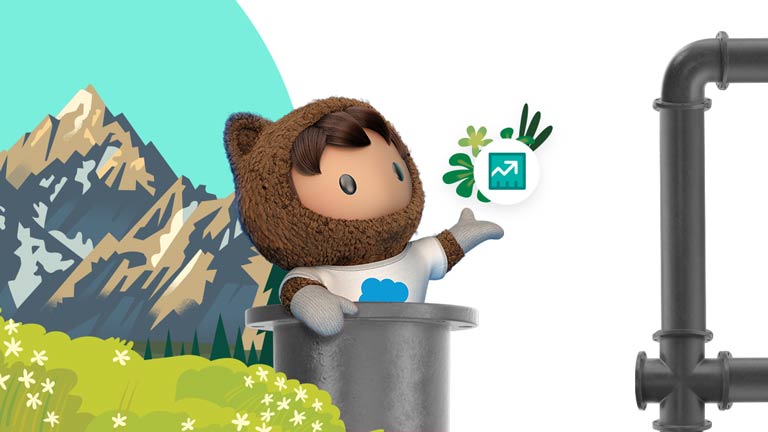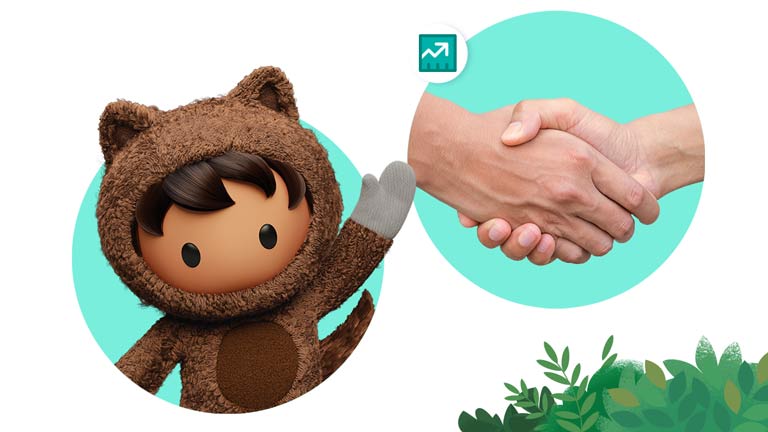We've all seen movies with romanticised scenes that focus on the close – intense negotiations and salespeople punching the air in celebration. They're trying to capture that thrilling, elusive moment when you close a deal. That’s why we’re all here. We love to help customers, chase new challenges, and in the process, hit those numbers.
But sales closing is an art, and like art, its style changes over time. We’ll move past outdated and ineffective techniques and talk to sales experts to get the nitty-gritty of what it means to close like a boss in today’s world.
What we’ll cover:
What is sales closing?
Sales closing, or getting a prospect to agree to a deal and sign a contract, is how reps make their quota and how businesses grow revenue.
It represents the culmination of all your efforts. You put in the time and made a strong case for why your solution can alleviate the prospect’s pain points. Now that you’ve popped the question with a (sales) proposal, it’s time to find out if this prospect is ready to commit.
Getting to that yes takes a lot of patience and persistence. Prospects will often say no before they get to a yes. The problem is, many salespeople give up before they reach that yes.
As we’ll explain further, sales closing isn't the only stage of the pipeline that matters, but it is absolute. You either close or you don’t. The make-or-break nature of sales closing can make it one of the most stressful aspects of selling, but it doesn’t have to be.
Closing a deal should be the easiest part of a sales cycle. If you have followed a rigorous sales process up to this point, closing is simply a case of stepping over the finish line.

What are the most common sales closing techniques?
1. Assumptive close
2. Puppy Dog Close
3. Scale Close
This is also referred to as the gauge close. You take the prospect’s temperature by simply asking them point-blank how interested they are in your product. (Ex: “On a scale of one to 10, with one being ‘Let’s end this conversation now’ and 10 being ‘Let’s get this solution implemented on Monday,’ how likely are you to move forward with purchasing?”) The scale close does two things: It lets you know if you’ve been effectively communicating the value of your product and also gives you an opportunity to address any objections they might not have shared with you.
Keyan Ghezelbash, Regional Sales Director at Salesforce, has advice for giving yourself the best chance of success: "Add value at every interaction, by gaining an intricate understanding of your customers’ industry. Provide clarity, by aligning your sales cycle to your client’s buy cycle. And use leverage, to bring the right resources in at the right time.”
4. Scarcity close
5. Takeaway Close
6. Summary Close
"Add value at every interaction, by gaining an intricate understanding of your customers’ industry. Provide clarity, by aligning your sales cycle to your client’s buy cycle. And use leverage, to bring the right resources in at the right time.”
"Add value at every interaction, by gaining an intricate understanding of your customers’ industry. Provide clarity, by aligning your sales cycle to your client’s buy cycle. And use leverage, to bring the right resources in at the right time.”
How do you improve at closing?

Know the customer.

Know their objections.

Know the decision maker.

Know when to fold ‘em.
Sales representatives don’t close every single opportunity in their pipeline. That means a lot of the prospects that come your way may not become customers. It’s also possible a small percentage of leads could bring in a lot of your revenue, which means you don’t have to pursue those unlikely to close. Knowing when to move on is critical. Don’t dwell on prospects that have shown no interest in closing. You’ll lose sight of more promising opportunities.
"If you can’t solve someone’s problem, be honest and explain why you can’t solve it," says Emma Rutter, Senior Learning Solutions Consultant at Go1. "They will remember your sincerity and potentially come back to you in the future when you can solve their problem.”

Know you’re part of a team.
Combined expertise will outweigh one person’s expertise every time. When you’re facing hurdles, lean on your collaborative tools like Slack to connect with your fellow reps or your sales managers in real time so you can decide your next move as a team. We recommend even creating deal-specific channels in Slack that can act as a repository of knowledge and support for high-level opportunities.
“Sales is not an individual sport, it’s a team sport," says Alyssia Tennant, National Sales & Delivery Director at Simplus. "To scale up, ensure communication and focus is aligned across multiple internal business units. Don’t just think of it as the sales process with salespeople; include your marketing and services teams and do away with silos.”
“Sales is not an individual sport, it’s a team sport. To scale up, ensure communication and focus is aligned across multiple internal business units. Don’t just think of it as the sales process with salespeople; include your marketing and services teams and do away with silos.”
“Sales is not an individual sport, it’s a team sport. To scale up, ensure communication and focus is aligned across multiple internal business units. Don’t just think of it as the sales process with salespeople; include your marketing and services teams and do away with silos.”
What sales closing mistakes should you avoid?

Going in for the hard close.
Pressure selling is out, empathy selling is in. When you come out early with an ask for the sale and then keep aggressively asking before you’ve even truly established your product’s value, it shows little consideration for the buyer. It makes it appear as though you're speeding through the sale to meet your quota, and it’s off-putting. After all, selling isn’t about you, it’s about them.
Charmaine Keegan, Founder, Director and Lead Trainer at Smarter Selling, encourages sales people to "listen, understand and connect with customers at the beginning of the sales journey. Don't be obsessed with closing."

Not asking for the sale.

Only closing at the end.
How do you know when it’s the right time to close? How do you avoid closing too early? Too late? This is a bit of a trick question. There is no singular moment when you go in for the close because, if you’re wise, sales closing is something that happens throughout the sales process. The prospect signing on the dotted line is more of a natural conclusion, not an event.
Bob Barsdell, Auckland Regional Sales Manager for PlaceMakers, has this advice: “Early engagement affords you the opportunity to sell efficiencies aligned to the supply chain or your own company structure; build tension and utilise 'soft closes'."
“Sense check decision making against a set of company values. As businesses rapidly grow, businesses can lose sight of the human element, but keeping these in check is ultimately what drives success.”
“Sense check decision making against a set of company values. As businesses rapidly grow, businesses can lose sight of the human element, but keeping these in check is ultimately what drives success.”
What's next?
More Resources

21 Pro Tips for Sales Reps

21 Pro Tips for Sales Leaders






